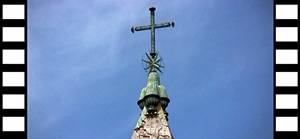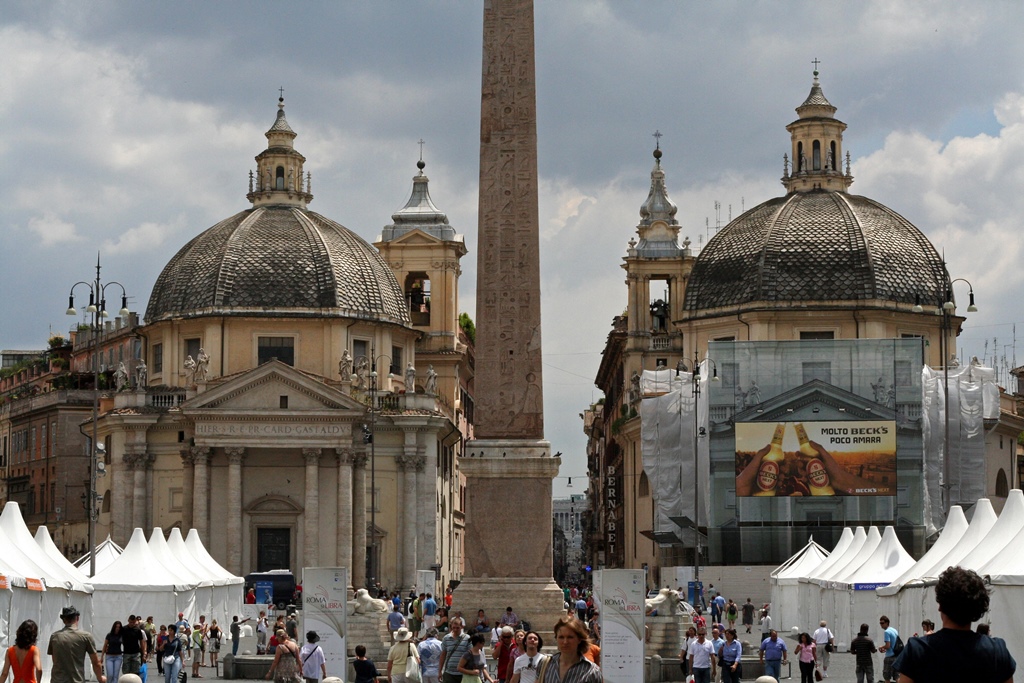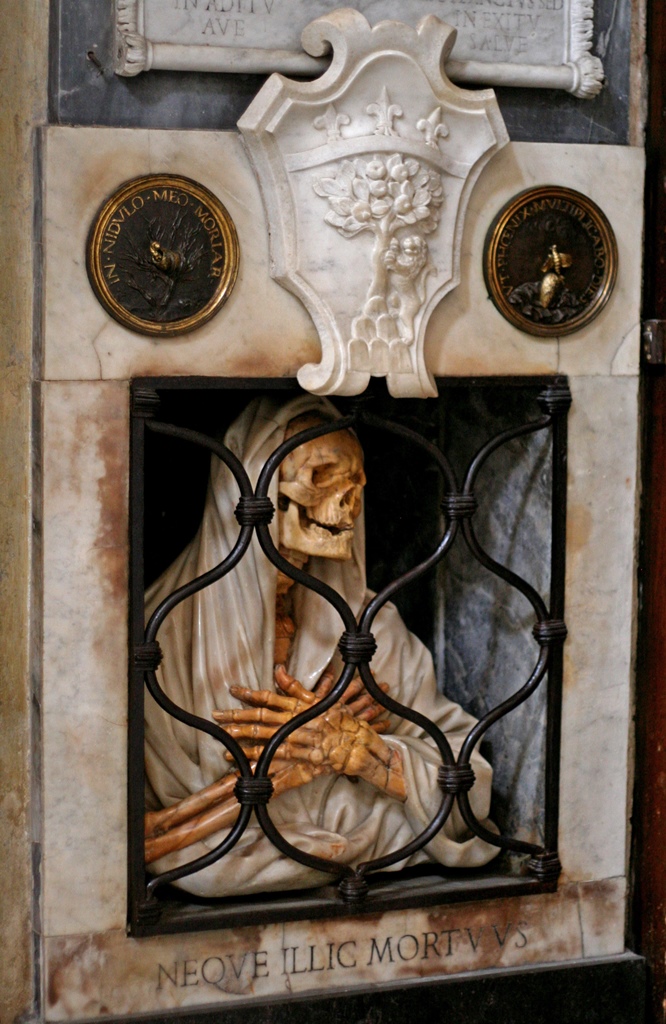The Piazza del Popolo is a large square lying just south of a gate that once marked the
northern boundary of the city of Rome. It is oval in shape, and at the center is the
second-oldest Egyptian obelisk in Rome, dating back to Sety I and Rameses II (somewhere
around 1280 B.C.). A small fountain surrounds the obelisk, and there are also fountains
at the east and west ends of the square. The current layout of the square is relatively
recent, having been designed in 1811-12 by the architect Giuseppe Valadier.
Our first view of the Piazza was through foliage from a balustrade at the western edge
of the Borghese Gardens. The square was covered with white tentlike structures, giving
us the impression that some sort of outdoor retail event was pending. From the
balustrade we followed a pathway to the left (apparently there is also a stairway to the
right) that took us down to the Piazza.
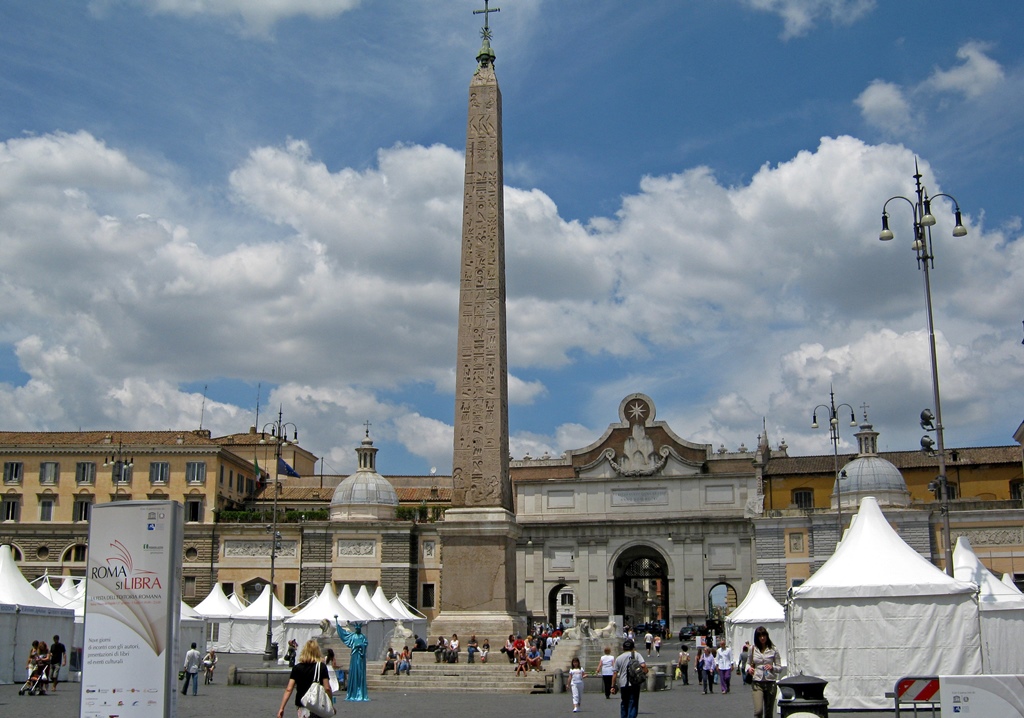
Obelisk

Piazza del Popolo
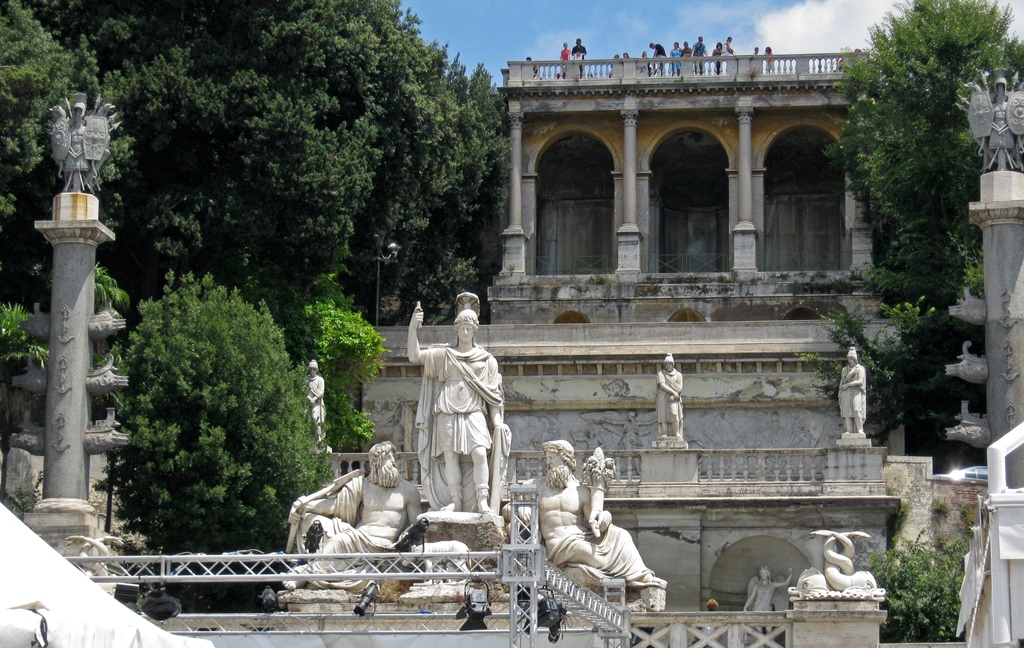
Eastern Fountain and Pincio Balcony
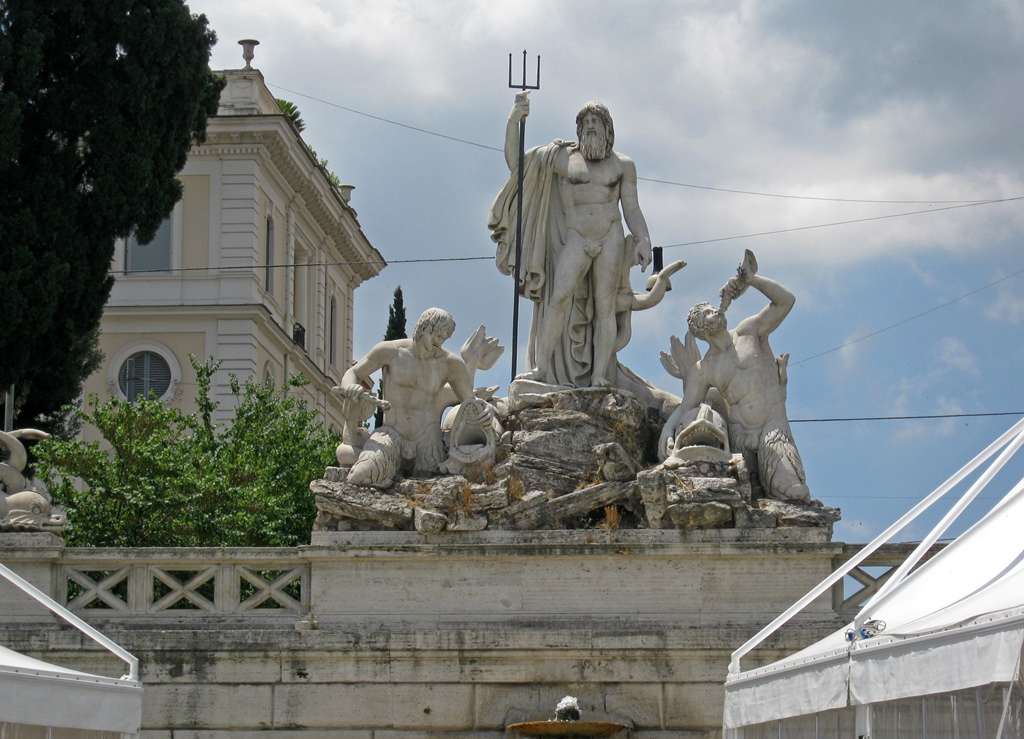
Western Fountain
From the center of the Piazza, we noticed two churches to the south which looked almost
exactly alike, with a street passing between them. These churches are Santa Maria dei
Miracoli and Santa Maria in Montesanto, and they date back to about 1680. Santa Maria
dei Miracoli, the one on the right, was covered in scaffolding, probably for some
repair work (renovation is probably out of the question). Neither church was open.
Santa Maria in Montesanto and Santa Maria dei Miracoli
To the north we could see an archway (the Porto del Popolo, designed by Bernini), marking
where the northern gate to the city had been, and to the right of the archway we noticed
another church. This church was the older Santa Maria del Popolo church (built in its
present form in 1472-77), and it was open. Inside were several artworks of note, created
by such people as Caravaggio, Bernini, Annibale Carracci and Raphael.
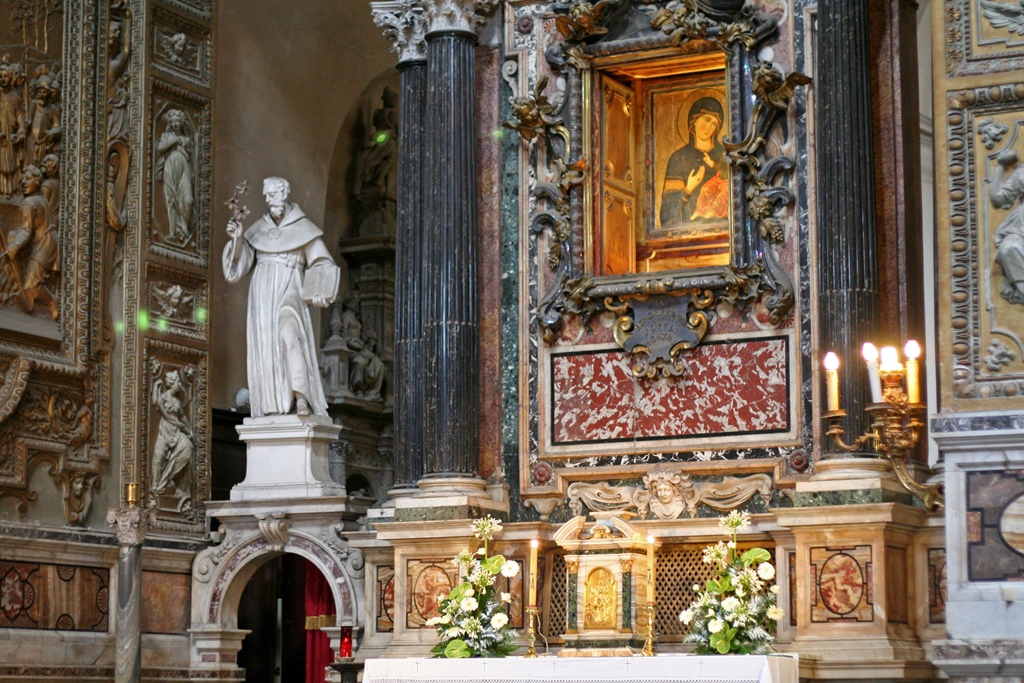
Main Altar
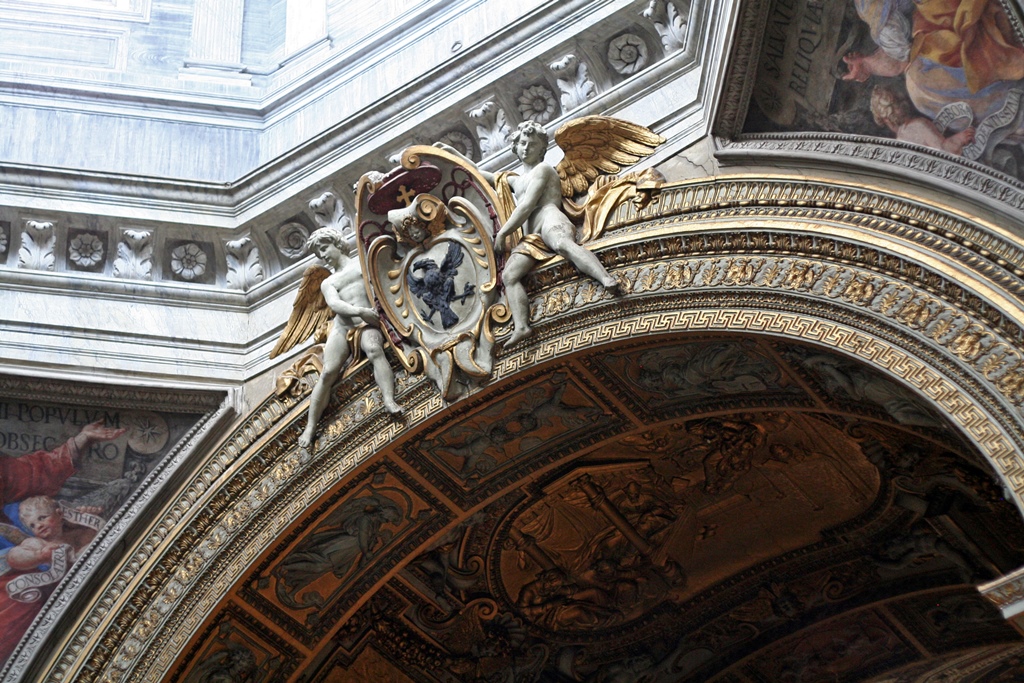
Decoration Near Dome
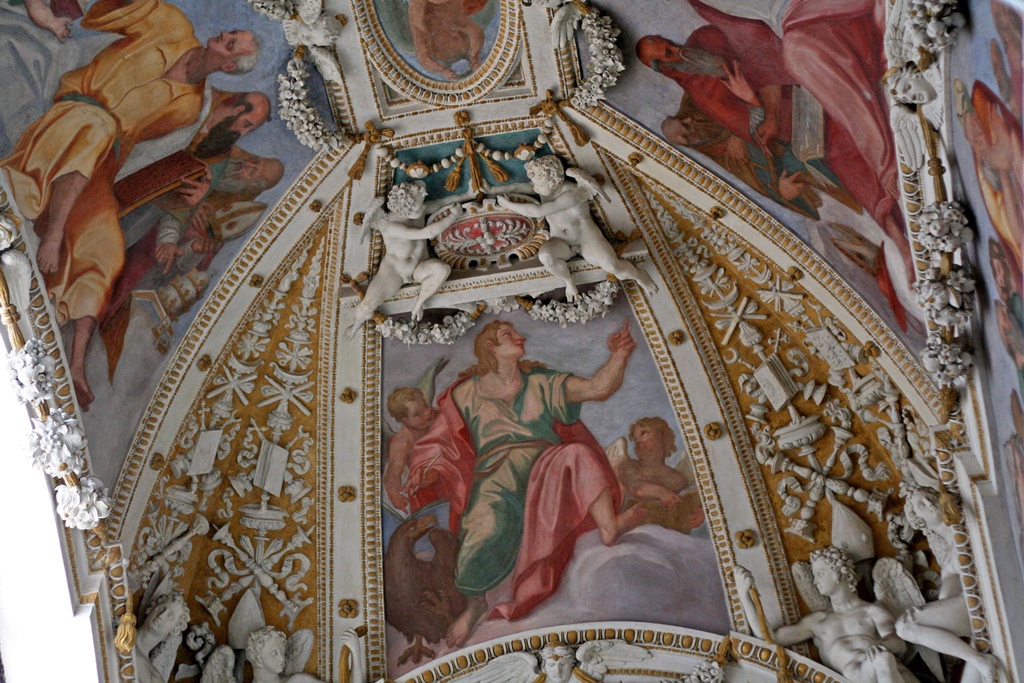
Ceiling Decoration
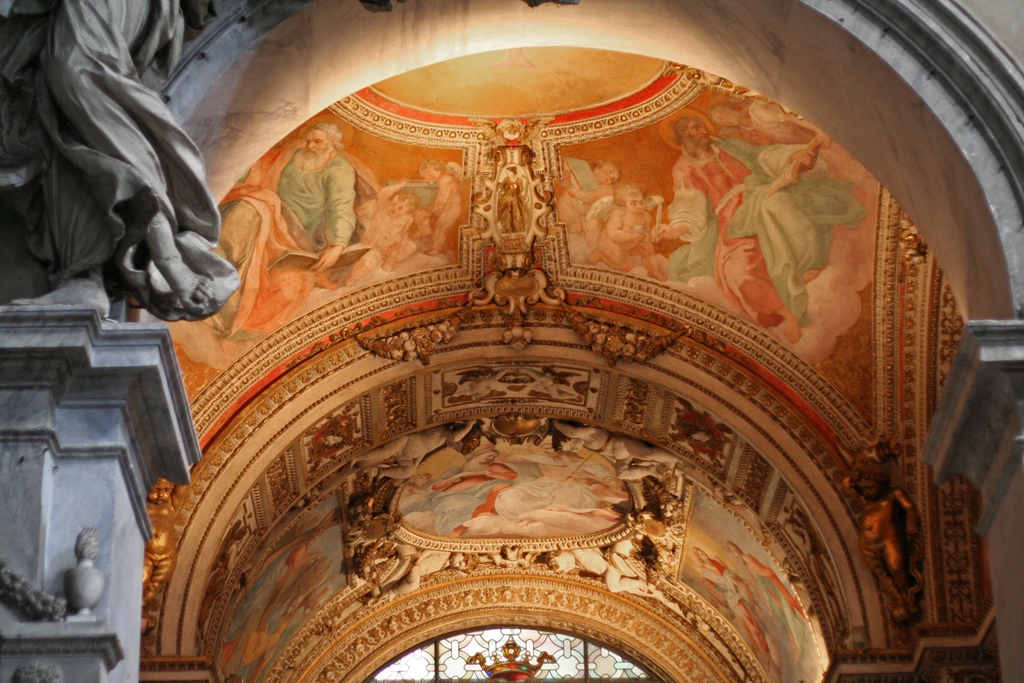
Ceiling, Cerasi Chapel
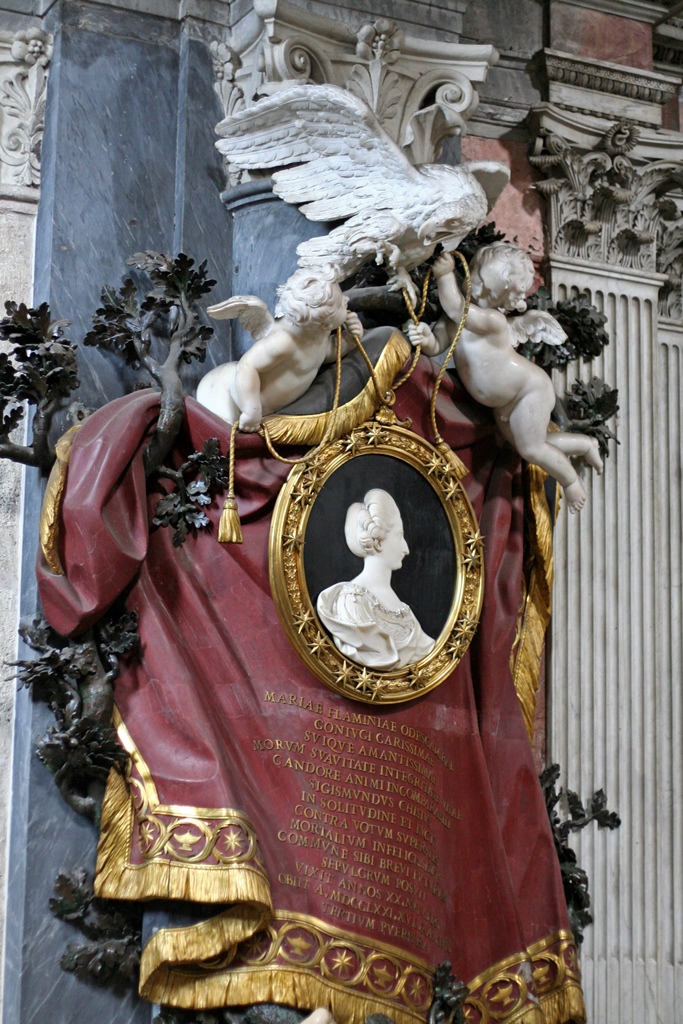
Tomb of Maria Flaminia Odescalchi Chigi (18th C.)
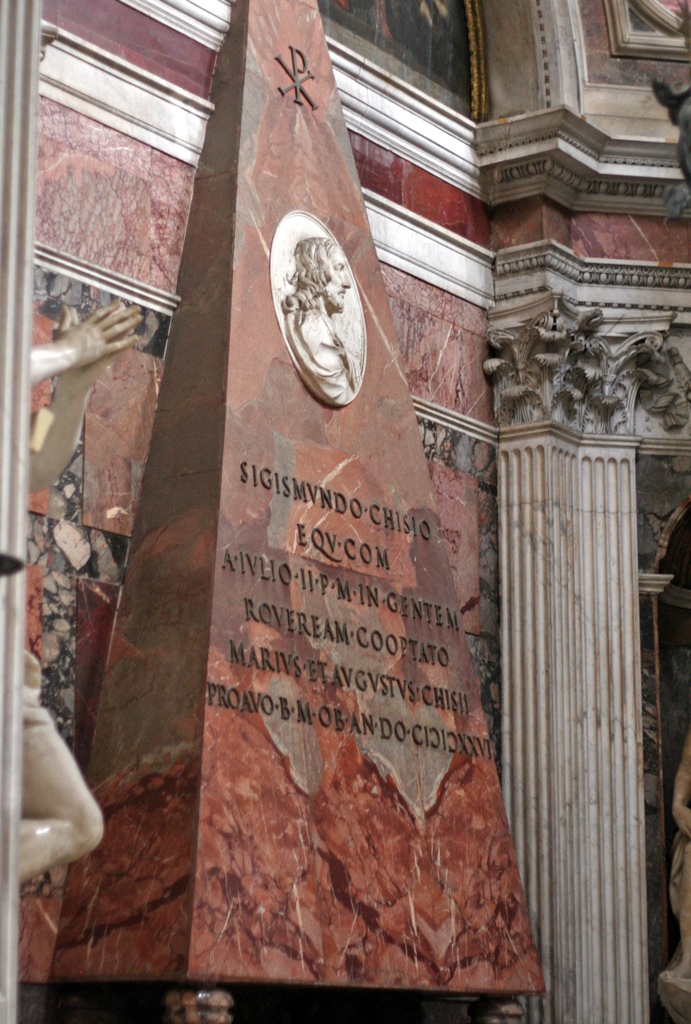
Tomb of Sigismondo Chigi (16th C.)
Tomb of G.B. Gisleni (1670)
Just to the north of the Porto del Popolo, we found the Flaminio Metro stop. The Metro
system in Rome is not very extensive (one must take buses or walk to reach many destinations),
but it happened to go directly to our next destination, the Spanish Steps, and since the fare
was included in our Roma Passes, we boarded the train and traveled south one stop to the
Spagna station.


